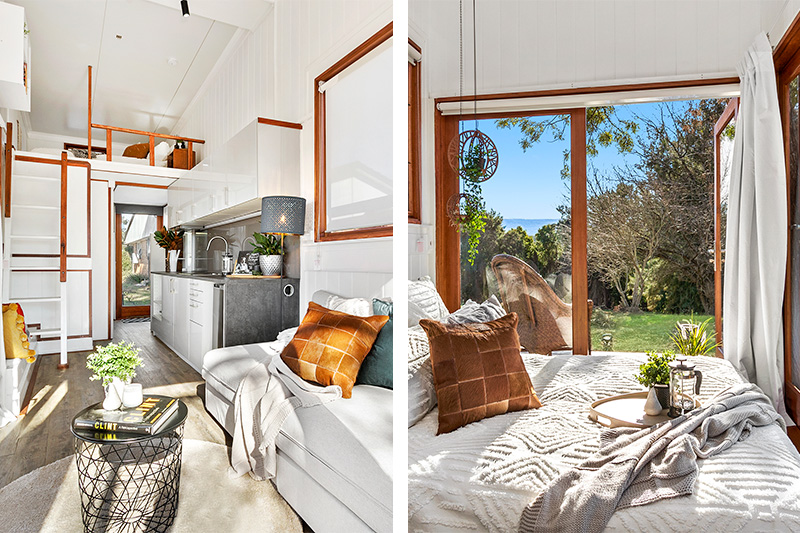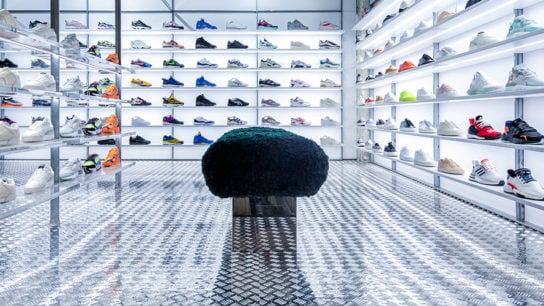Singaporean company Big Tiny builds mini houses to encourage city dwellers to reconnect with nature. Hive Life sat down with co-founder Jeff Yeo to talk small steps to big change.
In the age of aggressive urbanisation, the sight of nature is becoming ever rarer. A life lived in the company of forests and farmlands has, for the vast majority, morphed into one surrounded by concrete and glass. This is certainly the case in Australia where 89.55% of the population was reported to be living in urban areas in 2016. And, this phenomenon holds true even more so in Singapore, the place with the highest urban population in Southeast Asia. It was from these two places that Big Tiny, a startup building tiny houses in beautiful areas surrounded by nature, decided to sprout. Founded by three Singaporeans – Adrian Chia, Jeff Yeo and Dave Ng – in 2017, the company builds tiny homes on wheels and places them in spectacular locations across Australia, with the aim of helping people experience nature without compromising the creature comforts of modern living. “When people think about living in nature, the first few thoughts that come to mind will be tents and lack of showers and eating out of tins. We want our clients to discover nature whilst still being able to retreat to the comforts of our tiny homes, should they ever feel overwhelmed by nature,” explains Jeff. “We’re a mishmash between ecotourism and the tiny house movement.”
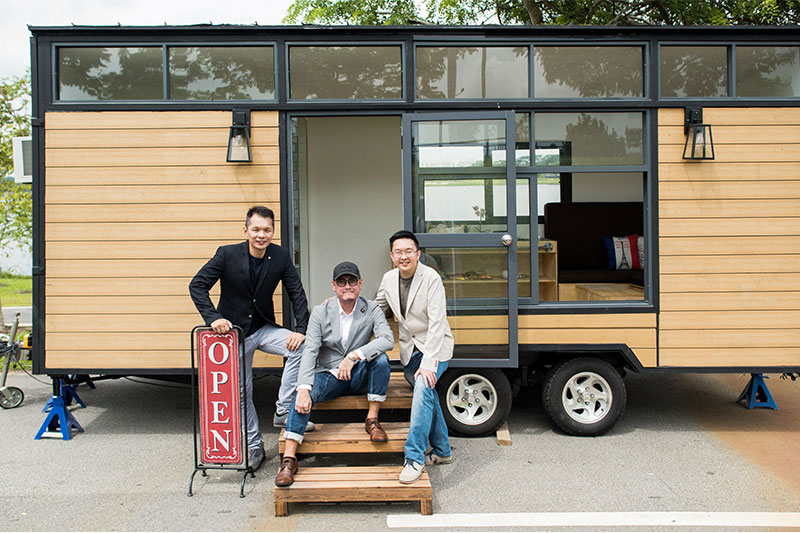
The tiny house movement originated in the United States as a cost-effective and eco-friendly answer to a looming, low-cost housing crisis. Although there is no official regulation, a tiny house is usually defined as a dwelling sized between 60 – 400 square feet. Over time, the movement has evolved to encapsulate a particular, minimalistic way of living. In Asia, where the general consensus has always been ‘bigger is better,’ Jeff found that ‘tiny living’ was a pretty alien concept. “We think Asians still have a fair bit to catch up in terms of eco-consciousness. We are educating our demographics by participating in events such as EarthFest and Singapore Design week to promote eco-living,” he explains.
Jeff, who has more than 10 years in the advertising industry, started Big Tiny after his first taste of entrepreneurship in Bangkok where he started a social enterprise aimed at helping women advocate for better working rights. “The idea originated from my partner Adrian. At that point, he was living quite a stressful lifestyle, running a tech startup. He had always sought out ways to be close to nature. So, while on a farm stay in Australia, he came up with the idea. And, we decided we wanted to bring these experiences to city-dwellers everywhere,” recounts Jeff. “We decided to build tiny houses in Australia first because, through our market research, we found a huge influx of Singaporeans to Australia and we wanted to hit both markets. Out of eight million tourists in 2016, half a million came from Singapore!”
You might also like Could Coliving be the Answer for Asia’s Expensive Cities? This Startup Thinks So.
The houses Big Tiny builds measure in at approximately 200 square feet and, through their patented building methodology and pre-fabricated panelised system, take only three hours to assemble. Despite the small size, they are packed full of all the functionality you’d expect from a much larger home. “In the early days, we tried living in much tinier tiny homes measuring about 100 square feet. But, it was basically, ‘Go in, and straight to bed.’ Our houses cost AUD 80,000 to buy and are larger now. People often tell us they aren’t as tiny as they imagined,” exclaims Jeff. The houses built on wheels generally fit around two to four people and come in varying styles ranging from Scandinavian sleek to warmer, wooden interiors. They all come with a fully equipped kitchen, clever storage solutions, hot showers complete with solar panels, composting toilets and a loft. Currently, users can get a taste of the tiny house life by booking a stay in one of their 28 houses via their accommodation platform Tiny Away in spectacular locations across Australia, sourced through their land partners.
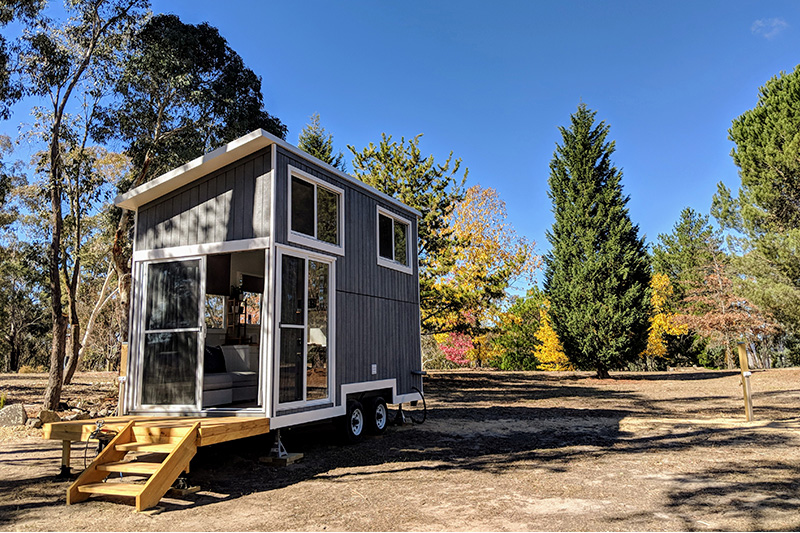
The heart of the tiny house movement, however, is about much more than living in a small space. Despite the amenities their houses provide, Jeff wants the main focus to be on what’s around rather than inside them. “Tiny living really forces you to spend more time outdoors experiencing nature. We want people to connect with nature in a minimalist and eco-friendly way through tiny living. Depending on our land partners, we want to offer location-specific food and activities like horse riding, fishing, food harvesting and wine tasting.” Beyond that, he wants to change your habits when you head home after a sojourn in his small, but perfectly formed, accommodation. “Tiny living will make you think twice before buying things. You might not be able to buy the 100th pair of sneakers or 200th handbag, but what we want people to know is that your normal creature comforts don’t have to be compromised when downsizing.”
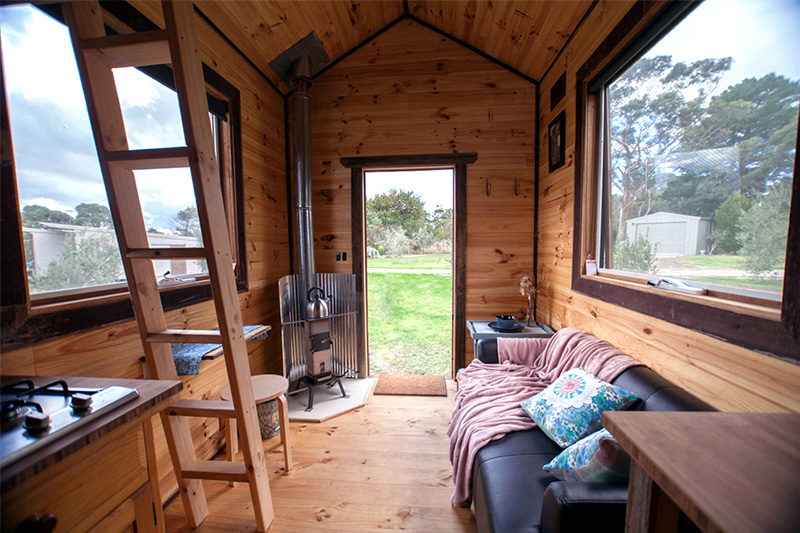
As of now, there are a few different ways people can get in on the tiny action. In addition to their holiday booking platform Tiny Away, Singaporeans can also participate in their sale and leaseback scheme whilst Australians with land can sign up as a land partner and Tiny House host. In the future, they plan to expand, making a push towards Asia and evolving minimalistic living beyond mobile homes. “Phase one was building mobile homes and placing them in places with exceptional scenery. For phase two, we are building resorts where we really want to target the Asian market with more luxurious and upscale homes than the ones we have currently deployed in rural areas. We have recently launched the sale of our Tiny Away Resort in Timboon, just a couple of minutes’ drive away from the Great Ocean Road that will have 30 units on-site, and in the near future, we’re eyeing another on a private island off Bintan in Indonesia where it will house even more facilities including a Kelong (fishing house built on stilts) that will supply our restaurants with fresh seafood and educate more people in sustainable fishing,” explains Jeff. “We are also thinking of introducing franchising to our business model, and are in talks with local councils on the possibility of social housing in Australia.” Still, the ultimate goal is to reconnect people with a way of life Jeff feels would benefit everyone. “What we ultimately want to do is encourage our clients to take baby steps in reconnecting with nature,” with tiny steps to change.
Related Articles
Vietnamese Architecture Firm VTN Architects is Building Greener Cities
Architecture Collective Studiofour Brings Danish Concept Hygge to Melbourne Home

